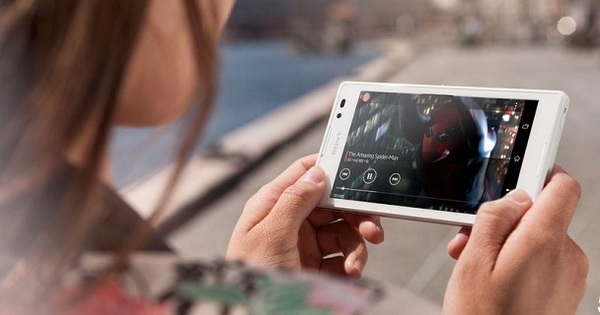If you have taken out a 4G subscription with a telecom provider, it is actually a shame to only use this fast connection for your smartphone. With a MiFi router, you can create your own WiFi network in practically any location. Several devices use the mobile internet signal in this way. Handy for camping! What should you pay attention to when purchasing a 4G router?
Tip 01: 4G router
A 4G router is also called a mi-fi router or mobile router. In fact, these names all mean the same thing. A 4G router is a device in which you can insert a SIM card. This device takes in the mobile data connection via the SIM card and then sends out a WiFi signal. The advantage of a 4G router is that you can connect multiple devices to the internet at any location, such as a laptop, e-reader and tablet. One condition is, of course, that mobile internet is available.
Depending on which product you choose, you can usually connect about ten to fifteen devices wirelessly. For example, you temporarily remove the SIM card from your smartphone and put it in the 4G router. Alternatively, you can also use a prepaid card for this, for example by purchasing a local copy abroad. Keep in mind that all connected devices all consume mobile data, which is at the expense of your mobile subscription or prepaid credit.

Roaming charges
Starting this summer, it will be extra interesting to consider a 4G router. After 15 June you will no longer have to deal with roaming costs for mobile internet in Europe. This means that you can use the data bundle of your regular subscription in all European member states without any problems, without your telecom provider charging a higher rate. The European Parliament also determined that you no longer have to pay extra for text messages and calls within the European Union.
Tip 02: Speed
An important assessment point with mobile routers is the supported speed. Especially now that 4G is available in most developed areas of the world, it pays to surf via such a lightning-fast mobile internet connection. Of course you need a copy that supports 4G. In addition to 4G, many telecom providers now offer 4G+, with which it is possible to achieve speeds of up to 225 Mbit/s. If you want to use this, pay attention to which product you purchase. Not all MiFi routers support 4G+ yet. Huawei, TP-Link and Netgear, among others, are developing suitable products that can handle the fastest mobile network protocol. By the way, you don't really have to pay attention to the WiFi standard, because almost all modern products have 802.11n or even 802.11ac antennas on board. This specification guarantees a fast WiFi connection, provided the mobile internet coverage is sufficient.
 Not all mobile routers can handle 4G+ . yet
Not all mobile routers can handle 4G+ . yet Tip 03: Internal battery
When you camp, there is not always an outlet nearby. If you like camping, choose one with an integrated battery. In this way, you can create your own WiFi network anytime and anywhere (provided, of course, that a mobile data connection is available). Please check the battery capacity in the specifications. Some mobile routers can last for ten to fifteen hours without a power supply, while other products offer a modest battery life of a few hours. Those who want a powerful battery can, for example, go to the Huawei E5770S. It contains a battery with a capacity of 5200 mAh, which results in a battery life of up to twenty hours. Some 4G routers with an integrated battery double as a power bank, so you can charge a smartphone or tablet on the go. In that case, connect the mobile device to a USB port or the included adapter cable. Then your device will of course not last as long as a 4G router!

Tip 04: Frequency band
Depending on which product you choose, the 4G router broadcasts the WiFi signal on a certain frequency. The most commonly used frequency band has been 2.4 GHz for many years. The advantage of this is that almost all wireless equipment can handle it, such as your laptop and tablet. There are also disadvantages, because in urban areas there is a greater chance of conflicts with neighboring networks. These networks use the same radio waves, which may adversely affect your Wi-Fi signal. Most routers nowadays can also broadcast the Wi-Fi signal over the 5GHz frequency band. There is then less 'competition', which usually results in a more stable Wi-Fi connection in crowded areas. Keep in mind that older equipment often cannot handle 5 GHz, such as outdated laptops. In addition, the wavelength is shorter compared to 2.4 GHz, so that 5 GHz is less suitable for longer distances. Decide which frequency band you want to use before purchasing a MiFi router. There are various possibilities. For example, dual-band routers broadcast on both frequency bands, but they cannot do this at the same time. If you want to use a WiFi signal on both 2.4 and 5 GHz, you can consider a so-called simultaneous dual-band router. Two separate wireless networks are then visible in the vicinity of the device. Furthermore, (web) stores also sell countless single-band routers that only support 2.4 GHz.
 A simultaneous dual-band router broadcasts the WiFi signal simultaneously in 2.4 and 5 GHz
A simultaneous dual-band router broadcasts the WiFi signal simultaneously in 2.4 and 5 GHz Tip 05: SIM card format
4G routers always have a SIM card slot. It is often located on the inside of the battery, sometimes the lock is located at the back. The size of SIM card you need differs per product. In addition to a standard SIM card, this can be a nano or micro copy. By the way, don't let this limit you. If your current SIM card does not fit, you can simply request a new one from the telecom provider. Some professional mobile routers even have room for two SIM cards. In the event of poor coverage, the device may then switch to a mobile network of another telecom provider. For normal use at a campsite, for example, you do not need a dual SIM function.

tethering
Owners of a smartphone also sometimes use this device as a glorified 4G router. This solution works great if you occasionally want to surf with a laptop in remote places. You let the smartphone broadcast a WiFi signal by activating the so-called tethering function. On an iPhone, go to Settings / Personal Hotspot. Once you enable this feature, choose a strong password. In addition to WiFi, you can also connect other devices via Bluetooth or a USB cable. In Android you can find the function by going to Settings / Tethering and Mobile Hotspot to navigate.

